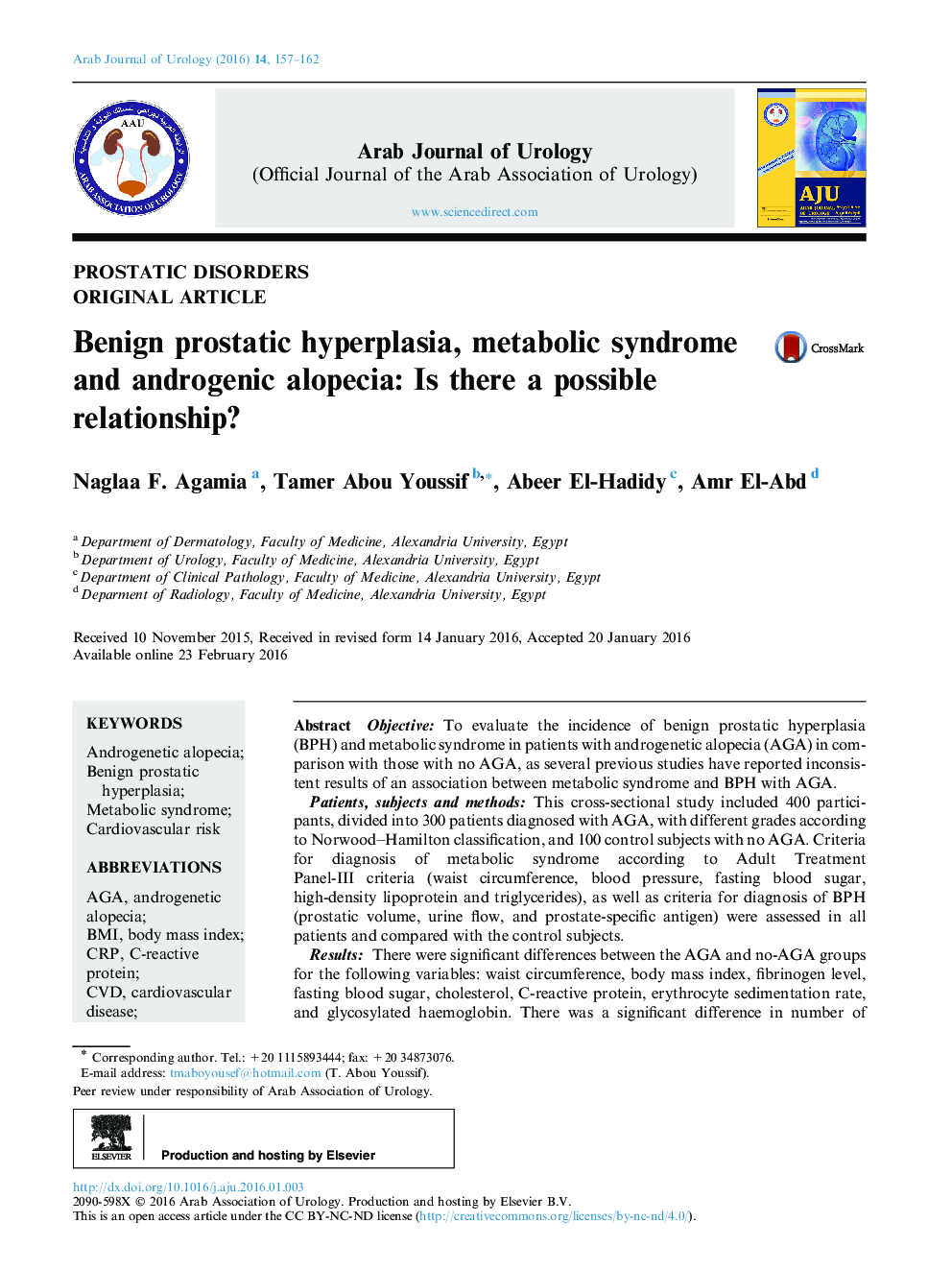| Article ID | Journal | Published Year | Pages | File Type |
|---|---|---|---|---|
| 4267924 | Arab Journal of Urology | 2016 | 6 Pages |
ObjectiveTo evaluate the incidence of benign prostatic hyperplasia (BPH) and metabolic syndrome in patients with androgenetic alopecia (AGA) in comparison with those with no AGA, as several previous studies have reported inconsistent results of an association between metabolic syndrome and BPH with AGA.Patients, subjects and methodsThis cross-sectional study included 400 participants, divided into 300 patients diagnosed with AGA, with different grades according to Norwood–Hamilton classification, and 100 control subjects with no AGA. Criteria for diagnosis of metabolic syndrome according to Adult Treatment Panel-III criteria (waist circumference, blood pressure, fasting blood sugar, high-density lipoprotein and triglycerides), as well as criteria for diagnosis of BPH (prostatic volume, urine flow, and prostate-specific antigen) were assessed in all patients and compared with the control subjects.ResultsThere were significant differences between the AGA and no-AGA groups for the following variables: waist circumference, body mass index, fibrinogen level, fasting blood sugar, cholesterol, C-reactive protein, erythrocyte sedimentation rate, and glycosylated haemoglobin. There was a significant difference in number of patients with AGA manifesting criteria of metabolic syndrome (51% vs 28%), as well as BPH diagnostic criteria (36% vs 6.8%) compared with the control subjects. Both BPH and metabolic syndrome were shown to be significant independent variables associated with AGA.ConclusionsDermatologists, urologists, and primary care physicians should monitor patients with early onset AGA for the development of urinary symptoms, to permit an earlier diagnosis of BPH; and for metabolic syndrome symptoms, to permit early diagnosis of cardiovascular risk factors.
